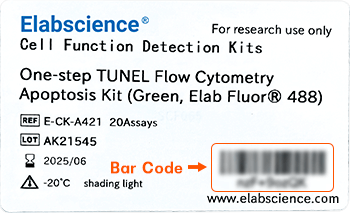NOV/CCN3 Polyclonal Antibody(Capture/Detector) (AN003940P)

For research use only.
| Verified Samples | Verified Samples in ELISA: Recombinant Mouse NOV/CCN3 protein, Mouse serum, Mouse plasma, Rat serum, Rat plasma |
| Dilution | ELISA Capture 2-8 μg/mL, ELISA Detector 0.1-0.4 μg/mL |
| Isotype | Rabbit IgG |
| Host | Rabbit |
| Reactivity | Mouse, Rat |
| Applications | ELISA Capture/Detector |
| Clonality | Polyclonal |
| Immunogen | Recombinant Mouse NOV/CCN3 Protein expressed by Mammalian |
| Abbre | NOV/CCN3 |
| Synonyms | CCN, CCN family member, NovH, CCN family member 3, Nephroblastoma-overexpressed gene protein homolog, Protein NOV homolog, Nov, Ccn3 |
| Swissprot | |
| Concentration | 1 mg/mL |
| Buffer | Phosphate buffered solution, pH 7.2, containing 0.05% proclin 300. |
| Purification Method | Antigen Affinity Purification |
| Conjugation | Unconjugated |
| Storage | Store at 4°C valid for 12 months or -20°C valid for long term storage, avoid freeze / thaw cycles. |
| Shipping | The product is shipped with ice pack, upon receipt, store it immediately at the temperature recommended. |
| background | NOV, also called CCN3, is one of six CCN (CYR61/CTGF/NOV) secreted proteins which share a common multimodular organization. NOV/CCN3 contains an N-terminal IGFBP domain that appears to be non-functional and a vWF type C and thrombospondin type I domain which mediate oligomerization and matrix interactions, respectively. The C-terminal cysteine knot domain interacts with several partners, including the matrix protein fibulin 1C, Notch-1, and CCN2, which it may heterodimerize. NOV/CCN3 also interacts with the gap junction protein Connexin43 and mediates suppression of proliferation. It also binds the calcium binding protein S100A4 and promotes calcium channel activation. The 354 amino acid (aa), 44 kDa human NOV/CCN3 shares 80% aa identity with mouse, rat and canine NOV/CCN3, and 78% aa identity with bovine NOV/CCN3. NOV/CCN3 also shows 38 - 50% aa identity with other family members including WISP proteins, except for WISP-2/CCN5 which lacks the cysteine knot. NOV/CCN3 is widely expressed developmentally, especially in muscle, endothelium, nervous system, adrenal cortex and chondrocytes. In transformed cells, a 32 kDa N-terminally truncated form lacks the signal sequence is localized to the nucleus. Truncation allows a C-terminal nuclear localization sequence to be active. Nuclear NOV/CCN3 acts as a transcriptional repressor but promotes proliferation, presumably by interfering with growth control. Full length NOV/CCN3 is a secreted matricellular protein which inhibits cell growth. Interaction of NOV/CCN3 with integrins alpha v beta 3 and alpha 5 beta 1 mediates endothelial cell adhesion, induces chemotaxis and promotes angiogenesis. Over-expression of NOV/CCN3 downregulates myogenic genes such as MyoD. |
Other Clones
{{antibodyDetailsPage.numTotal}} Results
-
{{item.title}}
Citations ({{item.publications_count}}) Manual MSDS
Cat.No.:{{item.cat}}
{{index}} {{goods_show_value}}
Other Formats
{{formatDetailsPage.numTotal}} Results
Unconjugated
-
{{item.title}}
Citations ({{item.publications_count}}) Manual MSDS
Cat.No.:{{item.cat}}
{{index}} {{goods_show_value}}
-
IF:{{item.impact}}
Journal:{{item.journal}} ({{item.year}})
DOI:{{item.doi}}Reactivity:{{item.species}}
Sample Type:{{item.organization}}
-
Q{{(FAQpage.currentPage - 1)*pageSize+index+1}}:{{item.name}}





